CLTS Foundation Global hosts CLTS Rapid Appraisal Protocol (CRAP) tool workshop at WEDC Conference 2017
CLTS Foundation Global recently held a capacity building workshop at the 40th WEDC International Conference, UK on the CLTS Rapid Appraisal Protocol (CRAP) – a tool developed jointly by CLTS Foundation Global and the UNICEF Eastern and Southern Africa Regional Office over the last two years.
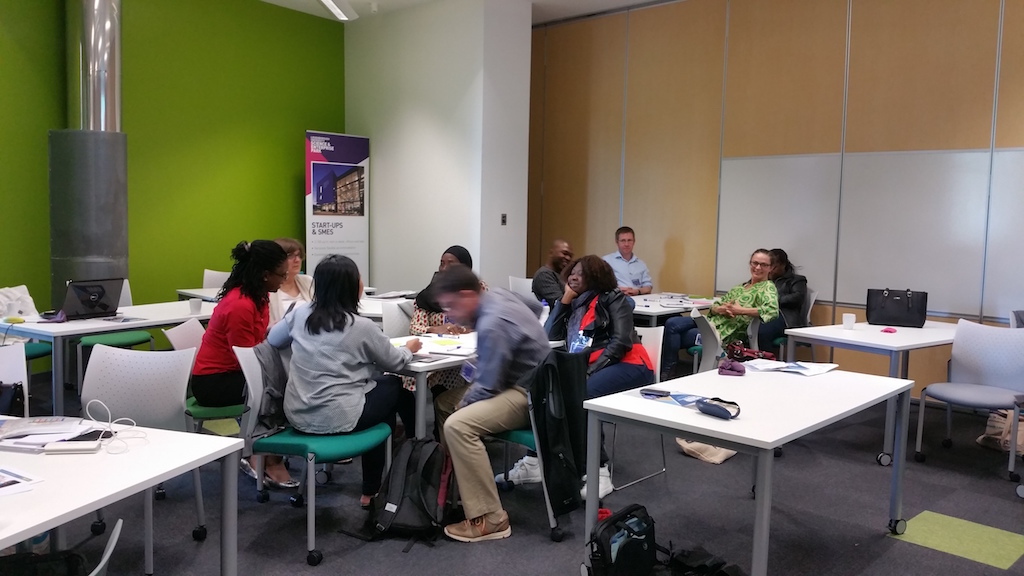 As part of the team that developed the tool and administered the same in different countries to field test its applicability, I was delighted to lead this workshop with other colleagues at this conference. CRAP is a tool that can be effectively applied in country contexts to assess the overall status of CLTS programming in the respective country. The tool application involves stakeholder consultations at different administrative and governance levels – national, regional and local – as an essential step towards understanding if the national policy and programming aspects of CLTS implementation in a country are sufficiently aligned at the policy and programme intervention levels at regional and local levels to produce results on the ground. This also helps in identifying critical building blocks of the programme in terms of strengths and gaps which can be used to design a way forward to expand the coverage, scale and effectiveness of the programme.
As part of the team that developed the tool and administered the same in different countries to field test its applicability, I was delighted to lead this workshop with other colleagues at this conference. CRAP is a tool that can be effectively applied in country contexts to assess the overall status of CLTS programming in the respective country. The tool application involves stakeholder consultations at different administrative and governance levels – national, regional and local – as an essential step towards understanding if the national policy and programming aspects of CLTS implementation in a country are sufficiently aligned at the policy and programme intervention levels at regional and local levels to produce results on the ground. This also helps in identifying critical building blocks of the programme in terms of strengths and gaps which can be used to design a way forward to expand the coverage, scale and effectiveness of the programme.
The workshop witnessed participation from government officials, sanitation experts, M&E specialists, NGO practitioners, researchers and academics across policy and programmatic functions from different countries. An active discussion and rich sharing of global sanitation experiences during the Millennium Development Goals (MDG) period from countries such as Mozambique, Nigeria, Afghanistan, Kenya, Nepal and India among others highlighted the need for the development of a tool like CRAP. CLTS emerged as a radical new approach in the year 2000 shifting sanitation policy and programmatic focus from top down toilet construction approaches to community led solutions and local collective action that was successful in achieving sustainable results in sanitation. The ability of the approach to achieve clear sanitation and hygiene outcomes within a quick timeframe with limited resources contributed to its popularity and uptake by national governments and development agencies across more than 70 countries around the developing world during the MDG period.
 While CLTS pilot projects demonstrated success in terms of achieving open defecation free (ODF) communities, there were several challenges in scaling up the approach and achieving success at a district, regional and national level. It was becoming increasingly clear that the achievement of ODF and post ODF solutions at a larger scale demanded the involvement of a diverse set of actors outside of the community such as government stakeholders and ministries, even those who did not have the primary mandate to implement sanitation; and non-government organisations such as development partners, private sector, civil society, academia and media. Achieving ODF districts, regions and nations required multi layered advocacy strategies and triggering of behaviour change across different levels of institutional actors. Moreover, it was observed that there was wide variation in the implementation of CLTS not just across countries but across partner programmes in the same country and even among different country programmes of the same organisation. The development of the CRAP tool was necessitated in this context in order to set a basic minimum standard for CLTS programme implementation and ensure that critical elements are in place to scale up the programme.
While CLTS pilot projects demonstrated success in terms of achieving open defecation free (ODF) communities, there were several challenges in scaling up the approach and achieving success at a district, regional and national level. It was becoming increasingly clear that the achievement of ODF and post ODF solutions at a larger scale demanded the involvement of a diverse set of actors outside of the community such as government stakeholders and ministries, even those who did not have the primary mandate to implement sanitation; and non-government organisations such as development partners, private sector, civil society, academia and media. Achieving ODF districts, regions and nations required multi layered advocacy strategies and triggering of behaviour change across different levels of institutional actors. Moreover, it was observed that there was wide variation in the implementation of CLTS not just across countries but across partner programmes in the same country and even among different country programmes of the same organisation. The development of the CRAP tool was necessitated in this context in order to set a basic minimum standard for CLTS programme implementation and ensure that critical elements are in place to scale up the programme.
The participants were involved in a simulation exercise to orient them on the steps involved in the CRAP application. The group was given a case study of a country sanitation context and each participant was given the role of a stakeholder covering both government and non-government sectors. The participants actively participated in a consultation exercise, which provided them an overall understanding of the tool application process, while giving them a hands-on experience on how to facilitate some of the tools.
Using participatory tools, the participants explored key areas of enquiry under the six key pillars which encompass the critical building blocks essential for scaling up any CLTS programme. During the consultation exercise, the first pillar – Policy, Roadmap and Directives- highlighted if there was an enabling environment and institutional support essential to implement CLTS and take it to scale in the country. Key questions were directed towards assessing if CLTS was part of national rural sanitation policy, if policy was translated into an operational roadmap and whether political buy in and leadership at all levels were in place to drive CLTS in the country at different levels of governance. The second pillar – Financial Planning and Budgeting – looked at the issue of adequate financial resources and planning processes that enable CLTS to translate from national strategies into operational plans at various levels. The pillar – CLTS Protocol or Guidelines – reviewed the quality of the national CLTS protocol in place and whether it was harmonized across partners and applied consistently across the country during triggering, verification and certification processes with due consideration for regional specificities. While the fourth pillar – Partnerships and Capacity – enquired if there were adequate number of actors in place with sufficient capacity and the convergence essential to achieve the national reach and quality needed for the CLTS program, the fifth pillar – Monitoring and Coordination – probed the existence of mechanisms to systematically capture process, outcome and impact data at various levels. It also looked at how data is coordinated and organized across various levels to provide feedback for CLTS programming and leadership. The last pillar – Post-ODF Sustainability – captured the extent of private sector involvement and sanitation marketing strategies to achieve sustainability in behaviour change and sanitation facilities.
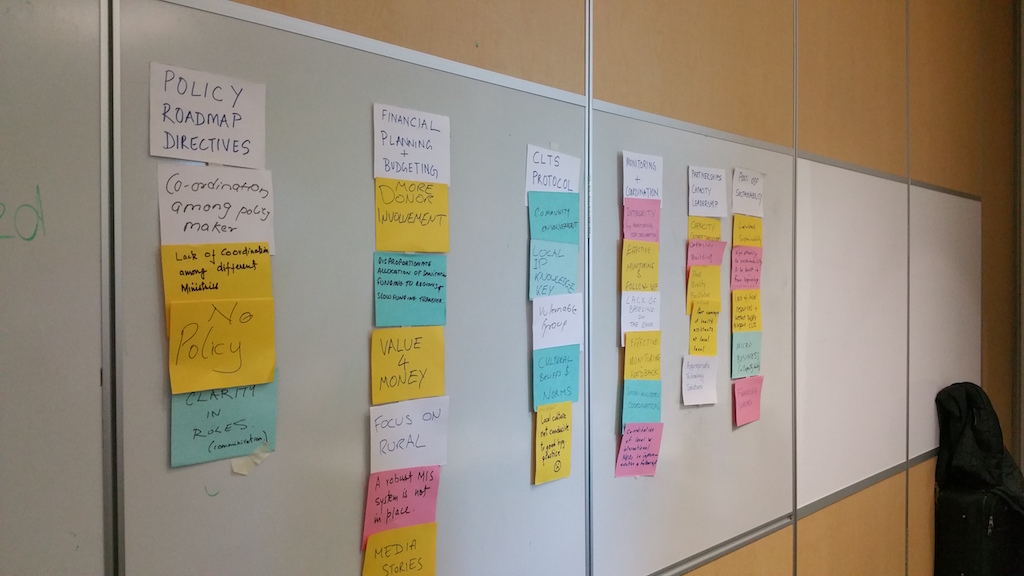 As feedback of the tool, the participants shared that the effectiveness of the CRAP tool process lies in its potential to involve key sanitation actors as active analysts in the implementation of a country sanitation programme: to understand the health and status of CLTS, and identify key drivers to develop a roadmap for an ODF nation – this ensures that the key actors take ownership of the recommendations and action plan emerging from this exercise.
As feedback of the tool, the participants shared that the effectiveness of the CRAP tool process lies in its potential to involve key sanitation actors as active analysts in the implementation of a country sanitation programme: to understand the health and status of CLTS, and identify key drivers to develop a roadmap for an ODF nation – this ensures that the key actors take ownership of the recommendations and action plan emerging from this exercise.
For more details on the CRAP tool, you can refer to the upcoming publication:
Kamal Kar, Sisir Pradhan, Preetha Prabhakaran, Ann Thomas, Peter Harvey (forthcoming): CLTS Rapid Appraisal Protocol (CRAP) – A tool for rapid assessment of the practice of CLTS at scale, UNICEF and CLTS Foundation Global, 2017
Acknowledgement:
The CRAP tool workshop was facilitated by Preetha Prabhakaran and Joydeep Dutta (CLTS Foundation Global) with support from Dr Andrew Cotton (WEDC University, Loughborough) and Dr Mansoor Ali ( UK WASH Network)
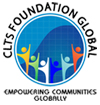
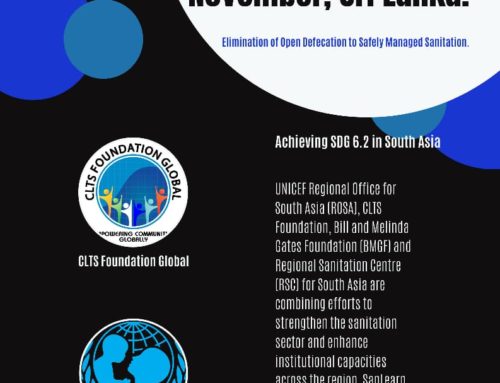

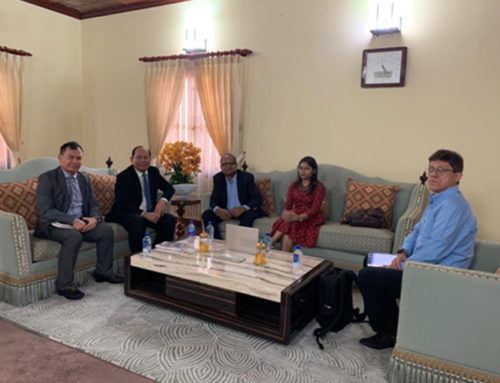
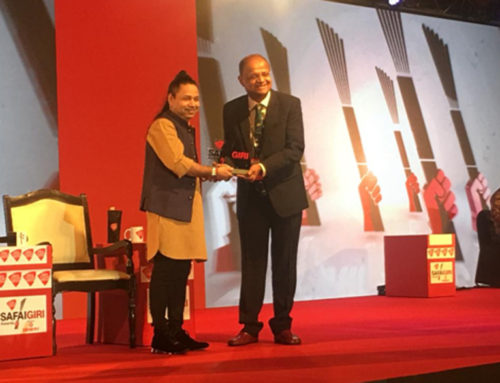

Leave A Comment